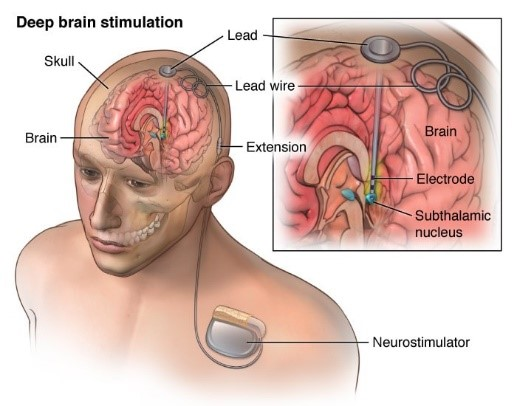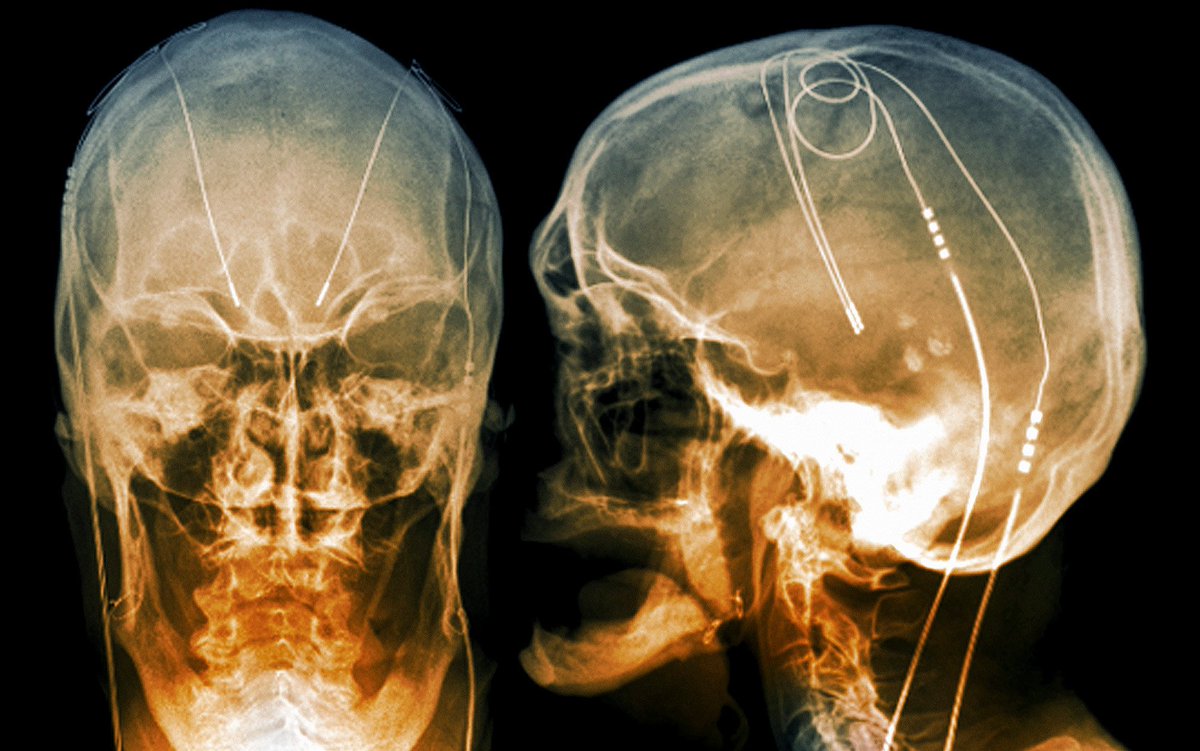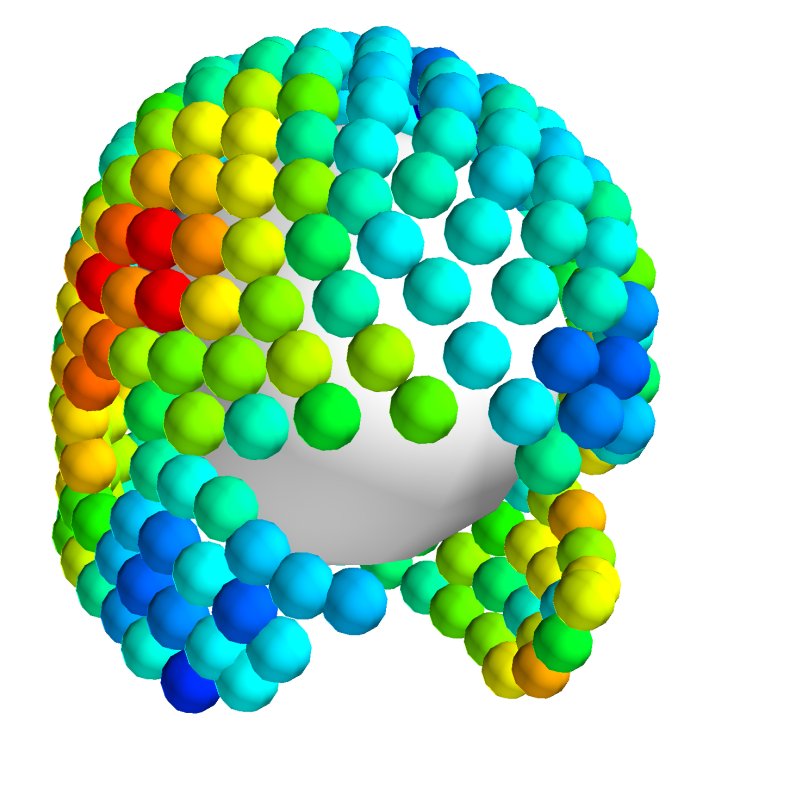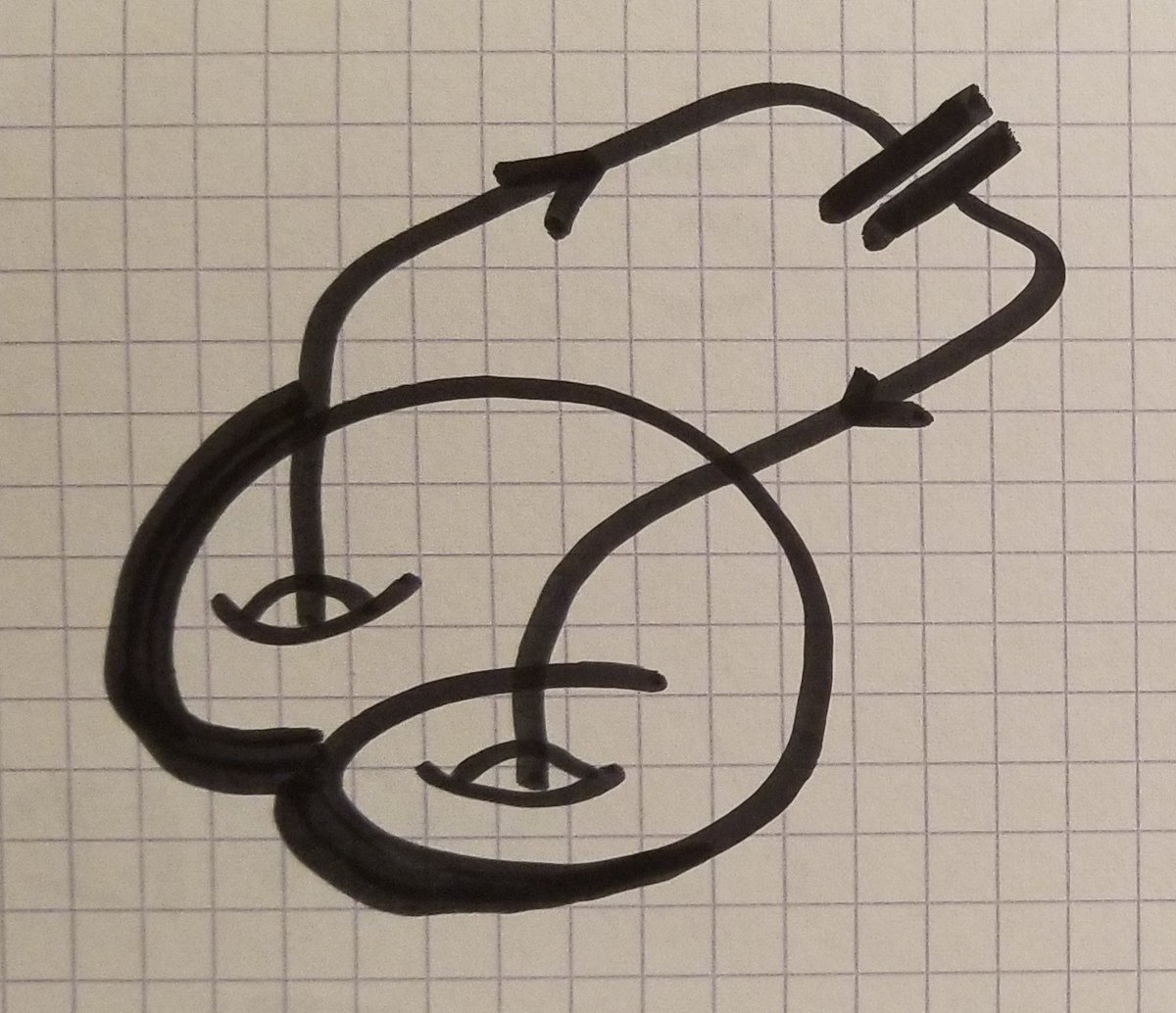1/ Did you know that #neuralimplants have been used to treat severe brain disorders for 50+ years now?! Maybe not new but definitely exciting! [1]
A (timely) #firstthread on where we are, where we& #39;re going, and how to move forward responsibly.
img: https://www.ninds.nih.gov/About-NINDS/Impact/NINDS-Contributions-Approved-Therapies/DBS">https://www.ninds.nih.gov/About-NIN...
A (timely) #firstthread on where we are, where we& #39;re going, and how to move forward responsibly.
img: https://www.ninds.nih.gov/About-NINDS/Impact/NINDS-Contributions-Approved-Therapies/DBS">https://www.ninds.nih.gov/About-NIN...
2/ There are over 160,000 people walking around with Deep Brain Stimulation (DBS) devices that treat symptoms ranging from uncontrollable tremors to severe depression! DBS involves #neurosurgery to implant electrodes into specific parts of the brain.
img: https://www.aans.org/en/Patients/Neurosurgical-Conditions-and-Treatments/Deep-Brain-Stimulation">https://www.aans.org/en/Patien...
img: https://www.aans.org/en/Patients/Neurosurgical-Conditions-and-Treatments/Deep-Brain-Stimulation">https://www.aans.org/en/Patien...
3/ This then lets us push simple electrical currents into the brain that reduce life-threatening symptoms [1]. By changing the brain region where these electrical currents are pushed into we can change the symptoms that we treat. These currents seem like they *block* bad signals.
4/ And, surprisingly, this has been effective for decades, even though we don& #39;t fully understand the neuroscience behind these disorders!
DBS has been pioneered mostly in motor disorders, like #Parkinsons Disease (PD). img: https://aeon.co/essays/is-deep-brain-stimulation-for-better-health-worth-the-risk">https://aeon.co/essays/is...
DBS has been pioneered mostly in motor disorders, like #Parkinsons Disease (PD). img: https://aeon.co/essays/is-deep-brain-stimulation-for-better-health-worth-the-risk">https://aeon.co/essays/is...
5/ Patients who have medically uncontrollable tremors can have their lives back with the flip of the DBS switch! It can be profound: https://www.youtube.com/watch?v=fq5cbTvXKQY">https://www.youtube.com/watch...
6/ Over the last 15 years DBS has even shown efficacy in treating depression [2]! But we need to better understand what the important brain structures and signals are before we can do this reliably [3]. img: http://news.emory.edu/stories/2015/04/hspub_brain_hacking_depression/campus.html">https://news.emory.edu/stories/2...
7/ New recording devices now let us study the brain signals changed by disorders and DBS alike. Disclosure: my own PhD work was in using neural recordings to study patterns that go with depression and precise DBS of specific cabling in the brain. (Stay-tuned for more!).
8/ So what does DBS do?
It& #39;s still a bit unclear but we& #39;re now decades into building a solid understanding even as we engineer DBS to be more effective, efficient, and broadly applicable. What& #39;s clear is: DBS is not mind control; it& #39;s more like & #39;removing the parking brake& #39;.
It& #39;s still a bit unclear but we& #39;re now decades into building a solid understanding even as we engineer DBS to be more effective, efficient, and broadly applicable. What& #39;s clear is: DBS is not mind control; it& #39;s more like & #39;removing the parking brake& #39;.
9/ We can& #39;t talk about DBS without acknowledging, and avoiding, the darker corners of its past. Experiments in the 50s were done with a narrow focus on novelty and a disregard of humanity. Novelty is nice but it can be used to hijack ethical progress in neural implants [4].
10/ As research and development in neural implants enters the mainstream [6] it& #39;ll be important for us to separate real progress from hype and inflated promises. Yes, it& #39;s a really exciting space and a great example of how engineering and medicine build each other up.
11/ But & #39;fail big and fast& #39; is bad when we& #39;re tugging at the fabric of the mind; ethics, equity, transparency, objectivity, and justice are not optional [5]. As new people enter the room it& #39;ll be important to respect the thoughtful approach that has already brought us so far.
12/ Hope that was informative. Retweet/follow for more on the science/engineering of DBS! #neurotwitter #scitwitter #medtwitter
13/
References:
[1] https://www.nature.com/articles/s41582-018-0128-2
[2]">https://www.nature.com/articles/... https://jamanetwork.com/journals/jamapsychiatry/article-abstract/1107402
[3]">https://jamanetwork.com/journals/... https://www.sciencedirect.com/science/article/abs/pii/S2215036617303711
[4]">https://www.sciencedirect.com/science/a... https://www.thelancet.com/journals/laneur/article/PIIS1474-4422(18)30237-0/fulltext
[5]">https://www.thelancet.com/journals/... https://www.frontiersin.org/articles/10.3389/fnint.2011.00017/full
[6]">https://www.frontiersin.org/articles/... https://thenextweb.com/neural/2020/08/24/elon-musk-may-announce-human-trials-at-the-neuralink-demo-heres-why-thats-awesome/">https://thenextweb.com/neural/20...
References:
[1] https://www.nature.com/articles/s41582-018-0128-2
[2]">https://www.nature.com/articles/... https://jamanetwork.com/journals/jamapsychiatry/article-abstract/1107402
[3]">https://jamanetwork.com/journals/... https://www.sciencedirect.com/science/article/abs/pii/S2215036617303711
[4]">https://www.sciencedirect.com/science/a... https://www.thelancet.com/journals/laneur/article/PIIS1474-4422(18)30237-0/fulltext
[5]">https://www.thelancet.com/journals/... https://www.frontiersin.org/articles/10.3389/fnint.2011.00017/full
[6]">https://www.frontiersin.org/articles/... https://thenextweb.com/neural/2020/08/24/elon-musk-may-announce-human-trials-at-the-neuralink-demo-heres-why-thats-awesome/">https://thenextweb.com/neural/20...

 Read on Twitter
Read on Twitter![1/ Did you know that #neuralimplants have been used to treat severe brain disorders for 50+ years now?! Maybe not new but definitely exciting! [1]A (timely) #firstthread on where we are, where we& #39;re going, and how to move forward responsibly.img: https://www.ninds.nih.gov/About-NIN... 1/ Did you know that #neuralimplants have been used to treat severe brain disorders for 50+ years now?! Maybe not new but definitely exciting! [1]A (timely) #firstthread on where we are, where we& #39;re going, and how to move forward responsibly.img: https://www.ninds.nih.gov/About-NIN...](https://pbs.twimg.com/media/EgN5eXUXYAA_0sa.png)

![3/ This then lets us push simple electrical currents into the brain that reduce life-threatening symptoms [1]. By changing the brain region where these electrical currents are pushed into we can change the symptoms that we treat. These currents seem like they *block* bad signals. 3/ This then lets us push simple electrical currents into the brain that reduce life-threatening symptoms [1]. By changing the brain region where these electrical currents are pushed into we can change the symptoms that we treat. These currents seem like they *block* bad signals.](https://pbs.twimg.com/media/EgOO5y4XsAAJ6NU.jpg)

![6/ Over the last 15 years DBS has even shown efficacy in treating depression [2]! But we need to better understand what the important brain structures and signals are before we can do this reliably [3]. img: https://news.emory.edu/stories/2... 6/ Over the last 15 years DBS has even shown efficacy in treating depression [2]! But we need to better understand what the important brain structures and signals are before we can do this reliably [3]. img: https://news.emory.edu/stories/2...](https://pbs.twimg.com/media/EgN5RxiXgAA18av.jpg)


![9/ We can& #39;t talk about DBS without acknowledging, and avoiding, the darker corners of its past. Experiments in the 50s were done with a narrow focus on novelty and a disregard of humanity. Novelty is nice but it can be used to hijack ethical progress in neural implants [4]. 9/ We can& #39;t talk about DBS without acknowledging, and avoiding, the darker corners of its past. Experiments in the 50s were done with a narrow focus on novelty and a disregard of humanity. Novelty is nice but it can be used to hijack ethical progress in neural implants [4].](https://pbs.twimg.com/media/EgORxSAWkAAxPVm.png)



